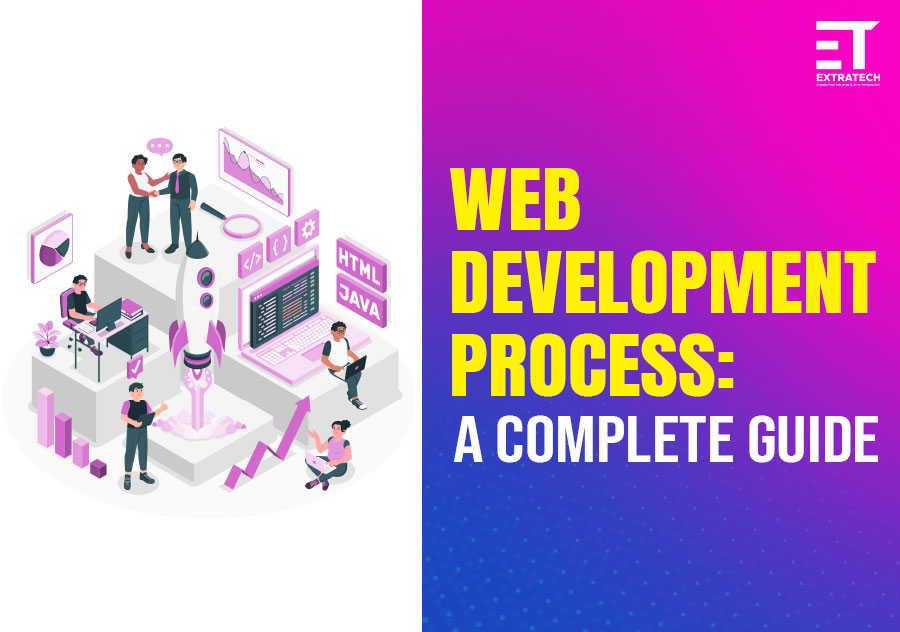Web Development Process; A Complete Guide
The web development process refers to the series of steps and activities involved in creating, building, and launching a website on the Internet. It encompasses everything from planning and designing the user interface to developing the necessary code, integrating various components, testing, and deploying the website for public access.
The process can vary in detail and complexity based on the project's scope, technology stack, and specific requirements.
Here's a step-by-step guide to the web development process in 2024 with potential adjustments for any new tools or trends:
1. Planning and Strategy:
Planning and strategy are foundational stages of the web development process that set the direction and scope for the entire project. A well-defined plan and strategy ensure that the project is aligned with its goals, target audience, technical requirements, and purpose. You need to create a detailed project scope outlining features, functionality, and requirements.
Developing a sitemap or information architecture to plan the website's structure is a very important part of the web development process. Choose the appropriate technologies, frameworks, and tools for development to help your planning and strategy reach your final goal.
2. Design and Development:
The next step is to create wireframes or mockups to visualize the layout and design of the website. You need to design the user interface (UI) including colors, typography, imagery, and branding according to the trends.
After the design is ready, you need to develop a responsive design to ensure the website looks and works well on various devices and screen sizes. Then present it to the client to obtain feedback and iterate on design concepts. The development process can be breakdown into 3 parts:
• Front-End Development:
In this part, you write HTML markup to structure the content of the website and use CSS to style the website according to the approved design. Then you implement interactivity and dynamic features using JavaScript and finally, optimize for performance and ensure fast loading times.
• Back-End Development:
In back-end development, you choose a server-side programming language (e.g., Python, Ruby, PHP, Node.js) and develop the server-side logic to handle requests, process data, and manage databases. After that, you implement user authentication and authorization (if required) and set up server hosting, domain, and SSL certificate for security.
• Database Development:
Here, you are required to design the database schema to store and organize the website's data. Then, you need to choose an appropriate database management system (e.g., MySQL, PostgreSQL, MongoDB) and develop queries and scripts to interact with the database.
3. Integration and Testing:
After the design and development process, you need to integrate the front-end and back-end components to ensure seamless communication. Then you need to test APIs and data flow between the client and server. Implement third-party services if needed (e.g., payment gateways, social media APIs).
After integration is completed, QA needs to perform functionality testing to ensure all features work as intended. He/she needs to conduct cross-browser testing to guarantee compatibility across different browsers, test responsive design on various devices (desktop, tablet, mobile), and even perform security testing and address vulnerabilities.
4. Optimization and Launch:
After integration and testing, the next step is to optimize website performance for speed and responsiveness. Compressing images and minifying CSS and JavaScript files is the best practice for proper website optimization. You should be implementing caching mechanisms to reduce server load.
After completing proper optimization, you need to deploy the website to a production server. Then, double-check all functionality and design elements and set up analytics tools to track user behavior and website performance.
5. Post-launch or maintenance:
Monitoring the website for any issues or bugs after the launch is a must. You need to gather user feedback and make iterative improvements. You need to update content regularly to keep the website relevant. You can even consider implementing search engine optimization (SEO) strategies to improve visibility.
Conclusion
Each of these considerations contributes to the overall quality, functionality, and success of the web development project. By addressing these factors thoughtfully and strategically, you can build a website that meets user needs, aligns with business goals, and delivers a seamless online experience.
Remember, the web development process can vary based on the project's complexity and specific requirements. Staying up-to-date with the latest technologies, frameworks, and best practices is crucial to ensure a successful web development project in 2024. You can contact us if you need any web development services for your business.

